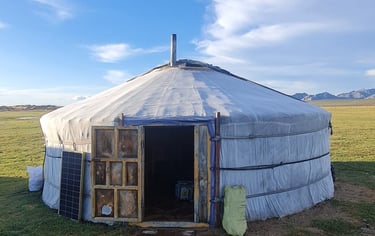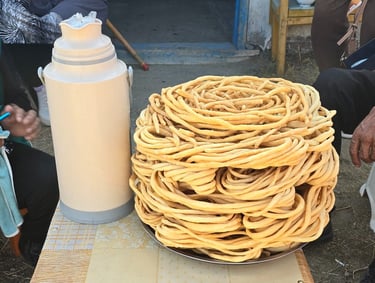Fieldwork




Kalmyk Oirat
Since 2022, I have been working with speakers of Kalmyk Oirat (Mongolic). Kalmyk is spoken by an aging minority in the Republic of Kalmykia, Russia, where it is also a co-official language, and in diasporic communities in the US and Europe.
In collaboration with fellow researchers Ghilyana Dordzhieva and Darina Gedeeva, I have also created resources contributing to the preservation and revitalisation of Kalmyk within the Kalmyk-American diaspora. Our project was supported and featured by Wikitongues. Please follow our work on our Living Dictionary, Facebook, and Instagram pages!
Khalkha Mongolian
Since 2020, I have been working with speakers of Khalkha Mongolian, the standardised variety of Mongolian spoken in Mongolia.


A Mongolian yurt, or ger
Freshly made gürmel boortsog in Bulgan-sum, Khovd province
Burning of zul 'candle' during the Kalmyk New Year, also known as Zul
Megrelian
Since 2024, I have been working with a speaker of the Zugdidi-Samurzaqano variety of Megrelian (Kartvelian). Megrelian is primarily spoken in Western Georgia and in diasporic communities in Eastern Europe.